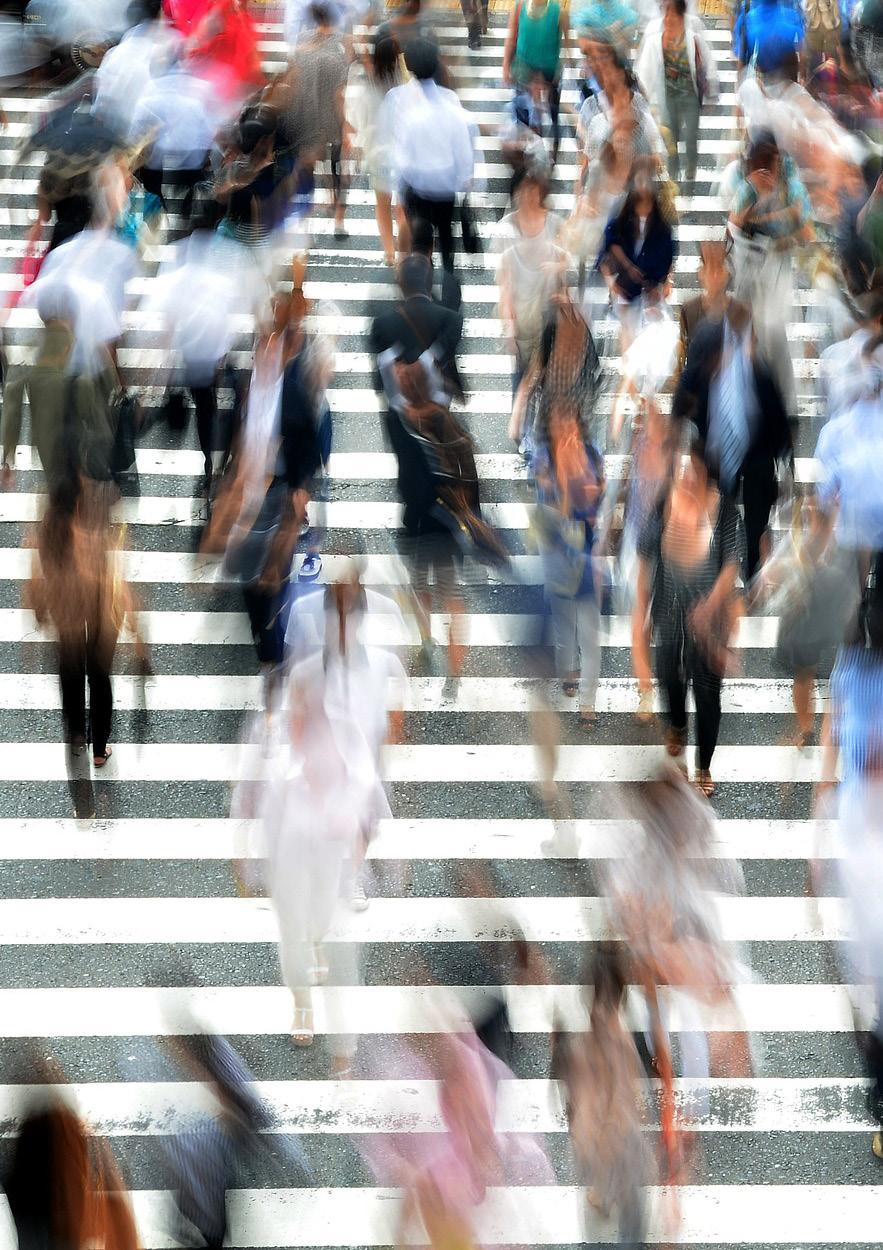
2 minute read
Foreword
by DJ Arsal
Gregory Hodkinson | Chairman, Arup Group
I have had the great luxury of walking to work almost every workday when I have been at home over the past five years. For many years prior, I commuted by train and sometimes by car. The train journey involved a short walk across Manhattan, which was something, but the car journey did not. I say ‘luxury’ both because I live close enough to my work to be able to walk and this means I can spend more time working or at home than travelling, but also because walking is a great personal benefit. It is undoubtedly good for one’s health; it helps keep one fit and all that goes with that and I find it stimulates thinking, both in the morning when planning the day ahead and in the evening when reflecting and shifting focus to home and family. Our aim at Arup is to shape a better world. Our focus is on planning, designing and delivering better cities and their component parts and systems. In this rapidly urbanising world this work is increasingly important for resource use, public health and economic efficiency. From 70 years of practice we know that a walkable city is a better city and that the more we walk the better the city in every respect. This report shows the benefits of walkable cities – economic, social, environmental and political – and sets out measures for improving walkability, illustrating these by case studies. The report challenges decision-makers to be more aware of the direct and indirect benefits of more walkable cities and provides guidance on how they might be realised.
Advertisement
| Health and Wellbeing | Promoting active lifestyles, Addressing the obesity crisis, Reduction of chronic disease, Improving mental health and people’s happiness | Safety | Improving traffic safety, Increasing passive surveillance, Reducing crimes | Placemaking | Promoting a vibrant urban experience, Enhancing sense of place, Encouraging art and supporting cultural initiatives, Increasing access to recreation facilities | Social Cohesion and Equality | Broadening universal accessibility, Developing intergenerational integration, Fostering social interaction, Strengthening community identity, Encouraging inclusiveness | Local Economy | Boosting prosperity, Supporting local businesses, Enhancing creative thinking and productivity | City Attractiveness | Enhancing city branding and identity, Promoting tourism, Encouraging inward investments, Attracting the creative class | Urban Regeneration | Increasing land and property values, Activating street facades | Cost savings | Shrinking congestion costs, Construction and maintenance cost savings, Reducing healthcare costs | Virtuous Cycles | Decreasing dependency on non-renewable resources, Optimising land use | Ecosystem Services | Addressing air pollution, Reducing ambient noise, Improving urban microclimate, Increasing permeable surface for water drainage | Liveability | Beautification of street landscape and public space, Implementing ‘sittability’ and recreational facilities | Transport Efficiency | Reclaiming underused space from vehicles, Encouraging a modal shift from motor vehicle travel, Promoting flexible commuting schemes, Increasing permeability in the urban fabric, Bridging barriers | Leadership | Fostering competitiveness, Building public consensus | Urban Governance | Promoting citizen empowerment, Encouraging participation of multiple stakeholders, Enhancing civic responsibility | Sustainable Development | Promoting sustainable behaviours, Addressing city resilience | Planning opportunities | Supporting regeneration processes, Allowing flexible and micro-solutions, Promoting cultural heritage





